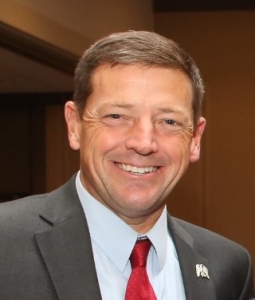 By Ross Parker
ticklethewire.com
By Ross Parker
ticklethewire.com
Part one of this report discussed the menace of a new generation of synthetic designer drugs from China causing a public health crisis in Europe. In America, in the last two years, enterprising rogue Chinese chemists have introduced hundreds of these new chemical combinations into the market.
This plague in America is steadily growing worse. Law enforcement and medical experts believe that the tens of thousands of reported cases in hospitals in the last year are just the tip of the iceberg. These numbers have essentially doubled just in the last year. The rate of reporting by the agencies like DAWN, which records emergency room admissions, and NFLIS, which keeps track of law enforcement laboratory tests on drugs, is a bleak harbinger of things to come.
Unless aggressive action is taken, we can expect the same panic the British are experiencing from this onslaught. On a more optimistic note, there are positive steps that can be taken and virtually all individuals and groups can have a role in this defense. This part will outline a strategy which can meet this oncoming crisis.
Parents —– Since the victims are largely teenagers living at home, the first line of defense has to be the parents. At a minimum all parents of teens and pre-teens should have a frank and two-sided conversation to educate their children on the life-threatening effects of these drugs, which are deceptively packaged and marketed as a “legal high.”
Teens think they are immortal and the prospect of some exciting new forbidden experience can be irresistible. Information and misinformation about the synthetics are spread by friends and acquaintances, and the availability is cheap and accessible. Many of these new consumers are naïve about drugs in general, as well as their dangers.
A teenage boy in North Dakota is currently facing murder charges because he gave a single tablet of a synthetic drug to a friend. The friend died shortly after ingesting it at a party. The consequences of such single acts are beyond the comprehension of most teens.
If parents have doubts about the extent of the problem, they should research the dozens of internet reviews of the latest synthetics by teen consumers for other teens. Also, YouTube videos record the bizarre celebration of the effects of these drugs. These cyber resources illustrate the complete lack of understanding of what can result from consuming these often unknown substances.
Another practical step for parents is to monitor their children’s behavior and habits. Of course there can be other forces which result in a change of friends, declining grades, and behavior outside of the ordinary. But these events can also be warning signs of involvement in a drug culture, signs that demand some kind of response.
Monitoring internet and mail activity can be a tricky assignment for parents. But most of these purchases are made in this manner.
Finally parents have a public responsibility in spreading the word of this menace to other parents, teachers, police, and policy makers. Many police are largely unaware and unprepared for this emerging threat, and public discussion and debate will be important in confronting it. A campaign last year in Michigan to press gas stations and convenience stores about their sales of these mislabeled drugs was effective in reducing retail sales and contributed to enhanced criminal penalties enacted by the legislature.
Teachers –– Teachers often observe changes in teen behavior not obvious to parents. They are also a pipeline of information from other kids about drug use. This can alert them to the problem, which needs to be discussed with parents. The schools also have an important role in educating kids about the dangers involved. A survey of high school seniors last year indicated that 11% admitted having used cannabinoids often incorrectly designated as “synthetic marijuana.” Demand reduction is probably the single most important component of meeting this threat.
Hospitals and Health Care Workers –– The difficulties in identifying and treating these admissions have been discussed previously. Chief among these is the lack of laboratory testing services which can alert the physicians toward a course of treatment. There are, however, labs that have this capability, even for many drugs from urine samples. The problem is that few hospitals use such lab services, leaving the doctor guessing as to how to treat the patient when time is of the essence. Failure to add this component, when it is now available, could have expensive civil consequences for hospitals. A recent article in the Journal of the American Medical Association warned doctors that some pharmaceuticals commonly used to treat particular synthetic drug overdoses can, for other drug overdoses, increase the patient’s stroke potential and further aggravate a patient’s medical condition. This is why accurate and rapid identification of the drug or drugs involved is essential.
Additionally, follow-up treatment for patients is seldom pursued. The effects of some of these drugs can linger for weeks. Medical follow-up provides an opportunity for rehabilitation and education, for both the patients and their parents.
Finally, hospitals’ contact with local police can provide important information for law enforcement about the incidence and prevalence of new drugs in the community. This can be done without identifying the patient or violating a confidence.
Journalists –– Except for a handful of articles, few of which address these new classes of drugs, journalists have not reported on this threat. A single article in the mainstream media can make real progress in exposing this issue to parents, teachers and state legislatures. An example of this potential is a recent article in MailOnline.com, in which two intrepid British journalists went undercover to a Shanghai drug lab and retrieved shocking admissions by the owner as to his business tweaking illegal drugs and sending millions of doses to Britain for his teenage customers.
State and Local Law Enforcement —- DEA, along with some effective state law enforcement departments, are leading the way in combatting the threat of the new synthetics both in educating the public and in assisting enforcement activities. The battle, however, is going to be won or lost in the local towns and cities by state and local police. As of now they are, for the most part, unaware of this scourge. An investigation into bath salt and spice offenses can be challenging, but this new generation of “tweaked” synthetics poses even more formidable obstacles. Additional training and funding are necessary to bring these officers up to date on identification and enforcement techniques. Another area now neglected is intelligence gathering. Only by knowing the synthetic drug landscape in their communities will police be able to react effectively.
Federal Government –– The President and State Department were quick to put cyber espionage on the agenda for talks with Chinese officials. The Chinese government’s laissez faire attitude regarding synthetic drug exportation, in many ways, poses a more immediate threat to American citizens. China maintains lax controls over these laboratories. For example, there is no export control over ephedrine and pseudoephedrine (crystal meth chemicals) other than a licensing requirement.
More importantly, in this context, only one of the new synthetic designer drugs is controlled in China.
Now may be an opportune time to approach the Chinese on this subject. There seems to be an increased awareness on the extent of the domestic abuse problem in that country by the government. There are an estimated 12 million regular drug users in the new free market economy of China. Drug officials have indicated a willingness to share information and cooperate with other countries on drug abuse problems. They have, for example, shown some improvement in cooperation as to the diversion of precursor chemicals exported from China to the U.S. The U.S. government should pursue such expressions of cooperation to help reduce Chinese exports of synthetic designer drugs.
Similar discussions with other countries which have these exporting laboratories, like India, could also be productive.
Federal Sentencing Commission –– The Attorney General’s communication with the Federal Sentencing Commission could facilitate prosecutions and appropriate penalties for these new classes of drugs. Since offense guidelines for such drugs are not now specified, they need to be reviewed to make sure that there are adequate provisions. Also upward departures on the sentencing range should be adjusted for such aggravating factors as: increased potency, mixture dangers, deceptive packaging aimed at children, medical consequences, and special skills involved in marketing and manufacturing.
Congress –– The Synthetic Drug Abuse Prevention Act of 2012 was a step in the right direction, but much more needs to be done.
The 1986 Analogue Act, 21 U.S.C. 802, 813 was intended for a different time and drug abuse reality and needs to be amended. It was effective in prosecuting, for example, LSD isomers and related compounds. However, to effectively investigate and prosecute this new generation of tweaked synthetics, changes need to be made to the statute that make it more responsive and flexible enough to address the endless flow of new analogue drugs.
The Analogue Act requires proof that the substance has a substantially similar chemical structure compared to a controlled drug; and either that it causes a similar or greater effect on the central nervous system or that it is represented or intended to have such an effect. Such proofs can result in a battle between government and defense chemists along with a complex array of charts and models of atomic structures. The lay jury then must sort through the scientific jargon.
Proof of these complex issues, particularly as to the knowledge and intention by non-chemist defendants who sell the stuff, can be a crap shoot. Proof beyond a reasonable doubt that the defendant knew that the analogue drug had substantially similar effects and that he/she intended it for human consumption can be extremely difficult given the long supply chain typically involved in the marketing of these drugs.
Also the federal criminal code needs an effective sham prohibition to permit the enforcement and prosecution of substitutes for the synthetic drugs. Proof of the element that the seller represented or intended that the drug was substantially similar to a particular controlled drug can be difficult to establish. Moreover, unlike some states there is no effective federal counterfeit substance statute against “rip off” offenses unless the substance actually contains a controlled substance. Prosecutors must use the attempt, conspiracy, theft or fraud statutes, each of which can pose problems in particular evidence scenarios.
All of these statutes need to be reviewed and amended to make evidence gathering and prosecutions of these new substances more feasible. The Analogue Act needs to be reviewed and amended to provide the elasticity needed to prosecute these new tweaked drugs. A broader definition will remove much of the problem prosecutors have in convincing the jury that the substance meets the specificity of the statutory definition. Expanding the scope of the prohibition will remove the troublesome issue from jury speculation in response to imaginative defense arguments.
DOJ and DEA need increased funding to support their current efforts to educate and assist prosecutors and law enforcement officers who are confronted with these cases, perhaps for the first time. The agencies also need wider authority to classify new analogue compounds administratively to allow a more rapid reaction time following their introduction to young drug users
Providing DEA and the Attorney General with the authority to define analogues by administrative rule would greatly reduce the confusing debate between defense and government chemists over the similarity of chemical structure between controlled and analogue drugs. Classifying the new synthetic drugs which are posing a danger to the community, during the period allowed by statute and subject to Congressional review, would mean that law enforcement could respond rapidly to the crisis. It would also mean that juries could focus on evidence of the defendant’s conduct and not have to speculate on the complexities of the chemicals’ atomic structural similarities.
Other federal law enforcement agencies, like the FBI, ICE, and Postal Investigation Service, have an important role in this effort as well and need to gear up to make a contribution.
__________________
The threat posed by this new generation of synthetic designer drugs is here and it is going to get worse. Failing to respond to the dangers of this peril will mean that increasing numbers of American teenagers will die or suffer life debilitating effects.
The question is whether we have the will, as a nation, to attack this problem on a broad front and with as many tools of education, community involvement and law enforcement as we can muster.




